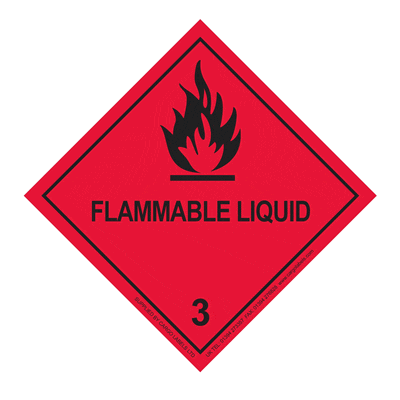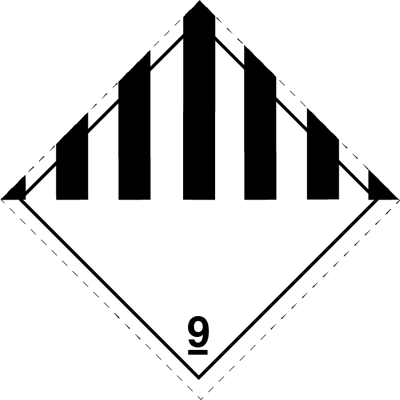To facilitate easy identification of dangerous goods, the international community has created a nine class classification system. This is subdivided as necessary, in order to adequately provide for the nature and properties of individual goods. For each class and division there are corresponding labels which must be affixed to the outside of a package during transport. These labels are illustrated below, along with a brief description of each class.
Note: The following information is provided as guidance only. We will not be held responsible for it's misuse. Always seek advice from a properly trained person when selecting appropriate labels for you cargo.
Class 1 Explosives
Explosive substances, explosive articles, pyrotechnic devices. Includes ammunition, fireworks, detonators, etc.
Class 2 Gases
Transported as either compressed, liquefied, refrigerated liquefied or gas in solution. Includes aerosols. This class has three divisions:
Division 2.1 - flammable gases i.e. butane, propane
Division 2.2 - non-flammable, non-toxic gases i.e. oxygen, liquid nitrogen, compressed air
Division 2.3 - toxic gases i.e. chlorine, coal gas.
Class 3 Flammable liquids
Includes liquids with a boiling point of 35 degrees C or less or a flash point of 60.5 degrees C or less. Examples are Petrol, Alcohol, etc.
Class 4 Flammable solids
Substances liable to spontaneous combustion and substances which, in contact with water, emit flammable gases. Class 4 has 3 divisions:
Division 4.1 - flammable solids such as hexamine solid fuel tablets for camping stoves; self-reactive substances and desensitized explosives.
Division 4.2 - substances liable to spontaneous combustion under the normal conditions encountered in air transport - such as Phosphorus which burns by itself when exposed to air.
Division 4.3 - substances which in contact with water emit flammable gases. I.e."Dangerous when wet". Examples are sodium, zinc particles
Class 5.1 Oxidising substances
Substances which in themselves are not necessarily combustible, but which by yielding oxygen may cause or contribute to the combustion of other material. Example is generators which produce oxygen by chemical reaction.
Class 5.2 Organic peroxides
These are thermally unstable substance which may undergo heat generating, self accelerating decomposition - which may be explosive, rapid, sensitive to impact or friction or react dangerously with other substances. Example is Hydrogen Peroxide
Class 6.1 Toxic substances
Those substances which are liable to cause death or injury if swallowed, inhaled or absorbed through the skin. Examples are pesticides and poisons
Class 6.2 Infectious substances
Those known to contain , or reasonably expected to contain, pathogens.
Class 7 Radioactive material
Class 8 Corrosives
Substances which, in the event of leakage, can cause severe damage by chemical action when in contact with living tissue or materially damage other freight, containers or the aircraft. Examples are Mercury, Battery acids. etc.
Class 9 Miscellaneous
Includes magnetic articles, which can have an impact on the aircraft's compass, Internal combustion engines, dry ice (solid carbon dioxide) etc.


